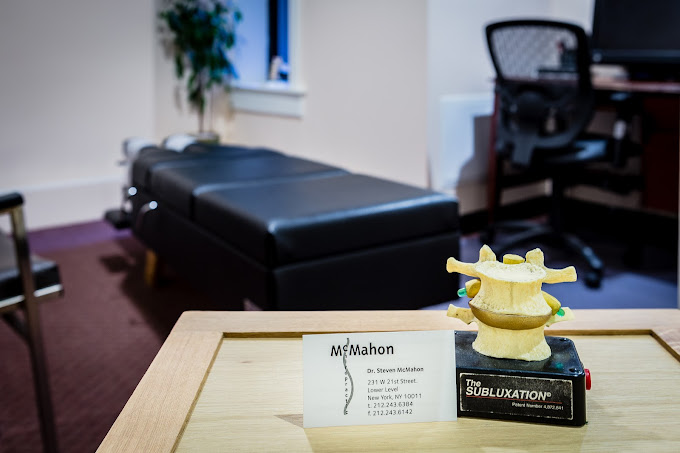How Does A Chiropractor Adjust Your Hip: What To Expect?
How does a chiropractor adjust your hip? Unlock the secrets of hip alignment and wellness with expert chiropractic care. Schedule an appointment today!
Chiropractic care is an important part of maintaining joint health and mobility, especially in the hips. The hip, or pelvic, joint is one of the most complex joints in the body, supporting and stabilizing a large majority of our movements. As a result, increased pain and decreased mobility can affect the entire body when it becomes misaligned as a result of strain or injury. Regular chiropractic treatment of the hips helps keep them healthy and functioning at their best for overall body wellbeing.
Adjustment of the hips during chiropractic care helps realign the joint, reducing discomfort immediately and providing long-lasting relief from chronic pain. This procedure may entail a variety of techniques, including stretching, soft tissue mobilization, and spinal manipulation, depending on your individual needs. Here at McMahon Chiropractic, our knowledgeable and experienced chiropractors will provide you with the tailored solution you need to reduce pain, discomfort, and limited range of motion.
Common Hip Problems That Require A Chiropractor’s Treatment
Chiropractors can offer treatment and relief for a range of hip problems, including:
Hip Pain And Discomfort
Hip pain and discomfort can range from mild aches to intense, debilitating pain. Long periods of sitting, excessive exertion during physical activity, improper form when lifting weights, or an underlying medical condition like arthritis or bursitis are all common causes. In some cases, hip pain can even be the result of a misalignment of the spine and hips.
Chiropractic care helps alleviate chronic hip pain by performing adjustments that restore proper joint alignment. The chiropractor may also employ soft tissue mobilization techniques to reduce muscle tension and improve range of motion in the hip area. This tailored approach can provide long-lasting relief from the symptoms associated with poor posture or chronic conditions.
Subluxations
Subluxations occur when two or more vertebrae in the spine become misaligned, resulting in a partial dislocation of the affected joint. Subluxations can create pressure on nearby nerves and blood vessels, causing pain and reduced mobility in the hip joint. Along with this, there is frequently tightness in the muscles surrounding the affected area.
Chiropractors use delicate adjustments to realign the vertebrae and reduce pressure on surrounding nerves. This helps improve range of motion in the hip joint as well as reduce muscle tension and discomfort. Chiropractic adjustments can provide long-term relief from subluxations associated with poor posture or chronic conditions like osteoarthritis.
Piriformis Syndrome
The piriformis muscle, located deep in the buttock, condenses the sciatic nerve, causing radiating pain down the back of the thigh and into the lower leg. This can cause difficulty when walking or sitting for long periods of time. Common symptoms include tightness in the hip area, tenderness when touching the piriformis muscle, and radiating pain down one or both legs.
Chiropractors use techniques such as soft-tissue therapy and stretching to relieve tension in the piriformis muscle and reduce sciatic pain. Manual adjustments are also used to realign areas of misalignment that can contribute to Piriformis Syndrome. If left untreated, Piriformis Syndrome can lead to chronic pain and disability over time.
Osteoarthritis
This is a common cause of hip pain and affects the cartilage and joint lining of the hip. As the cartilage breaks down, it induces inflammation in the joint, leading to stiffness, swelling, and pain. Common symptoms include difficulty moving the hip joint, grating sensations when moving the hip joint, and localized tenderness in the area.
Chiropractic care can be an efficacious treatment for hip osteoarthritis by decreasing inflammation and increasing mobility through manual adjustments and soft-tissue therapy. In addition to reducing symptoms associated with osteoarthritis, chiropractic care can also improve coverage of motion in the hip joint and decrease stress on surrounding muscles.
Hip Bursitis
This condition is often the result of repetitive motions or overuse of the hip joint and affects the area around the hip. Symptoms include aching, stiffness, swelling, tenderness, and pain that radiates down to the thigh. With this condition, chiropractic treatment can help reduce inflammation in the affected area as well as relieve pain. Manual adjustments can also help restore a normal range of motion and improve hip alignment. Additionally, soft-tissue therapies such as massage, ultrasound, and electrical stimulation can help relieve muscle tension and encourage healing.
Hip Flexor Strains
Overstretching or tearing of the hip flexor muscles is what causes hip flexor strains. This type of injury is often seen in athletes who engage in activities involving repeated kicking and running motions, such as soccer and track and field. Common symptoms of strained hip flexors include pain, swelling, bruising, and difficulty standing from a seated position.
Chiropractic care has been found to be an effective form of rehabilitation for hip flexor strains. Manual adjustments can help reduce inflammation and improve the different motions in the affected area. Targeted exercises such as stretching can also improve flexibility while strengthening the surrounding muscles. Soft-tissue therapies like massage can help relieve tension and support healing. With ongoing chiropractic care, patients typically find relief from their symptoms and make a full recovery from hip flexor strain injuries.
How Do Chiropractors Do Physical Examinations For Hip Problems?
Chiropractors typically use a combination of patient history, physical examinations, and sometimes diagnostic imaging to diagnose hip problems. Here are some of the steps chiropractors may take to diagnose hip issues:
Palpation
During a physical examination, chiropractors may use palpation to assess the hip. Palpation is a technique used to ascertain information about the underlying tissues and muscles without the use of any diagnostic imaging. By placing their hands on the patient’s hip, chiropractors can identify tenderness or swelling indicative of injury, as well as evaluate range of motion and muscle strength. This helps them determine which treatments could best relieve the symptoms of hip pain.
Motion And Alignment Assessment
Chiropractors also use motion and alignment assessments to evaluate the hip joint during the diagnostic process. This helps them identify any structural or biomechanical issues that may be causing pain. By assessing hip position, muscle tone, and range of motion, chiropractors can determine if there is any misalignment in the joint or underlying tissues that could be causing pain. In addition, they may look for evidence of weak muscles or restricted motion that could indicate an underlying issue. Through this evaluation, chiropractors can rule out potential causes of hip pain and narrow down their diagnosis to better provide targeted treatment.
Diagnostic Imaging (If Necessary)
Chiropractors may recommend diagnostic imaging such as X-rays and MRI scans in order to further examine the hip joint and other structures in the area. In some cases, chiropractors may want to rule out any serious underlying conditions, such as a fracture or tumor, that could be causing hip pain. They may also use these images to track the progress of treatment over time if the injury is more chronic. Imaging can also help them verify the alignment of the hip joint and detect any misalignment that could be contributing to ongoing pain or discomfort. Ultimately, it depends on the particular case but diagnostic imaging can be an important part of accurately diagnosing and treating a hip issue.
Referral For Further Evaluation
If chiropractors suspect a more complex or severe hip condition that requires medical intervention or surgical evaluation, they may refer the patient to an orthopedic specialist or another healthcare provider for further assessment. This is important for conditions such as labral tears, hip impingement, or fractures that may require more than conservative care. An exact diagnosis of the underlying cause of pain and dysfunction is critical to developing a successful treatment plan and enabling the patient to return to full functioning as quickly and safely as possible.
Harmonious Approaches For Hip Adjustments
Below are some specific harmonious techniques considered by the chiropractor for hip adjustments, which include:
Gonstead Technique
Chiropractors use the Gonstead technique to adjust the hips safely and effectively. This technique involves the use of specific hand placements along with a combination of both high-velocity, low-amplitude thrusts as well as light, sustained pressure. Through this application of force, the patient’s hip joint can be re-positioned and manipulated to its proper position. Additionally, the use of X-ray analysis will help to assess any imbalances or misalignments that may be present in the hip joint. By utilizing this combination of techniques, chiropractors are able to successfully realign and readjust the hips for optimal function and mobility.
Activator Method
The activator instrument is a small handheld device that provides a controlled, low-force thrust to the targeted area. It works on the principle of using minimal force to create maximal effects. The speed and accuracy of the adjustments achieved with this technique are unparalleled when compared to other techniques. With its application, chiropractors can precisely target specific areas that need adjustment while minimizing the risk of any further injury or discomfort. By applying gentle pressure through the instrument, chiropractors can help restore balance in joint structures, soothe muscle tension, and restore harmony back into the hip region.
Flexion-Distraction Technique
The flexion-distraction technique is a special chiropractic method for adjusting the hip region. It involves positioning the patient on a specially designed drop table, which then drops to create an impulse that helps relax the muscle tension around the hip joint. This allows chiropractors to make more precise adjustments to restore harmony to this region of the body. The advantage of this technique is that it provides even, harmonious adjustments as opposed to manually attempting each vertebra or muscle individually, which can result in further discomfort or injury.
Diversified Technique
The diversified technique is a chiropractic approach involving specific manual adjustments to the spine and other joints. This method utilizes precise thrusts and manipulations to restore motion, alignment, and balance within the musculoskeletal system. Through these adjustments, chiropractors can address issues such as joint pain or restricted range of motion. In particular, for the hip region, this technique helps relax tight muscles, improve joint mobility, and reduce inflammation. Additionally, adjusting misaligned vertebrae can reduce muscle tension and nerve irritation in the pelvic area.
7 Step Process: How Does A Chiropractor Adjust Your Hip?
The chiropractic hip adjustment process involves manual techniques aimed at improving the alignment and function of the hip joint. Depending on the individual’s condition, the chiropractor may use a variety of methods to improve joint mobility and reduce pain. Generally, the process involves seven steps:
Step 1: Patient Assessment
The initial patient assessment is an essential part of the chiropractic hip adjustment process. During this step, the chiropractor will discuss the patient’s symptoms and medical history in order to develop a comprehensive understanding of their condition. This discussion enables the chiropractor to develop a personalized treatment plan for each patient by identifying the body parts that are experiencing pain and dysfunction. The information gathered during this assessment also provides insight into any underlying conditions or structural abnormalities that may be causing or contributing to the patient’s discomfort.
Step 2: Positioning
After the patient’s assessment is complete, they are then placed in various positions on the adjustment table to facilitate effective hip adjustments. The chiropractor will use their hands and/or a specialized adjusting tool to apply pressure to various areas of the hip during each position. Depending on the needs of the patient, they may be asked to lay flat on their back or stomach or be positioned in different side-lying positions. In some cases, they may also need to be prone-positioned in order for the chiropractor to access specific areas of the body that would otherwise be difficult to reach while standing or sitting.
Step 3: Muscle Relaxation
Once the patient is in a suitable position, the chiropractor will then use various techniques to relax the hip muscles and soft tissues around the hip joint before making the adjustment. This can include gentle muscle stretching, light massage, vibration therapy, or trigger point therapy. These techniques are designed to help loosen tight muscles and improve circulation in order to better facilitate a safe and comfortable adjustment. Loosening up these muscles and soft tissues allows for a greater range of motion during the adjustment, which can enhance its effectiveness.
Step 4: Joint Preparations
Once the muscles and soft tissues have been relaxed, the next step is to prepare and mobilize the hip joint for adjustment. This may involve gentle mobilization techniques such as manual rotations, stretches, or special instruments that help stretch the joint capsule. The chiropractor may also use a variety of techniques to assess the range of motion and ligamentous integrity of the hip joint prior to adjusting it. All these preparations are important in order to make sure that the adjustment is performed safely and effectively.
Step 5: Chiropractic Adjustment
The chiropractic adjustment process typically involves the use of either hands or specialized tools to treat the hip joint. Gentle mobilization techniques, such as manual rotations and stretches, are often used to mobilize the joint in order to improve range of motion and ligamentous integrity prior to adjustment. The chiropractor may also make use of activator tools, which generate a precise and gentle force to apply an adjustable thrusting pressure into the joint. Activator tools can be particularly effective in adjusting joints with stubborn connective tissue adhesions, as they can help break down those restrictions more effectively than manual manipulation. Adjustment techniques like these are applied directly to the hip joint in order to restore its normal alignment and optimal functioning.
Step 6: Communication
Communication between the chiropractor and the patient during the adjustment session is key. The doctor should discuss the diagnosis and treatment plan with the patient, answer any questions they may have, and explain the expected outcomes of care. It’s important for patients to feel comfortable during the session so that they can relax and get the most benefit from their adjustments.
The chiropractor should also provide instructions to the patient about what to do after each treatment session and any lifestyle modifications they may need to make in order to maintain the benefits of chiropractic care. This could include advice on diet, exercise, stress management, and postural improvements.
Step 7: Post-Adjustment Assessment
After the treatment session, the chiropractor should conduct an assessment to evaluate the progress of the adjustment. This assessment usually includes a range of motion test to measure and track changes in the hip’s range of motion since before starting care. In addition, they may also use diagnostic imaging such as X-rays or ultrasounds to compare pre- and post-adjustment images. This helps them understand how effective their treatment was, any limitations that may be present, and what further interventions might be necessary for optimal recovery.
The chiropractor may also assess the patient’s strength and flexibility, which can help identify any muscular imbalances or areas of tightness that could contribute to pain or improper alignment. By closely monitoring the patient’s progress over time, they’ll be able to make necessary adjustments to their plan of care.
Does Hip Adjusting Hurt?
The experience of hip adjustments at a chiropractor’s office can vary from person to person. Some patients report feeling pressure or mild discomfort when their joints are adjusted, while others describe the experience as pain-free and even slightly pleasurable. In addition to the patient’s own physical sensations, the speed and force used by the chiropractor during an adjustment can also affect its perceived intensity. Therefore, it is important for patients to communicate directly with their chiropractors about how they feel during treatments so that adjustments can be made as needed.
Ultimately, the goal of any hip adjustment is to restore balance in the body and reduce symptoms of severe pain and limited range of motion. With care and attention from an experienced practitioner, this process can be done safely and effectively with minimal or no discomfort for most patients.
Don’t Let Hip Pain Hold You Back – Reach Out To McMahon Chiropractic!
Chiropractic care is an influential way to reduce hip pain and restore balance to the body. Through manual manipulation, a chiropractor can help alleviate pressure and tension in the hips while ensuring the patient feels as little discomfort as possible. This process is often tailored to each individual, allowing the chiropractor to make adjustments as needed. With professional care and attention, chiropractic can be a valuable option for people suffering from hip pain. If you are suffering from hip pain, don’t let it hold you back. Reach out to McMahon Chiropractic today to learn more about how chiropractic care could help reduce your pain and restore balance in your body!





